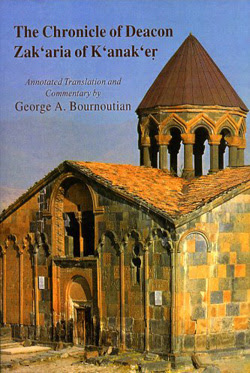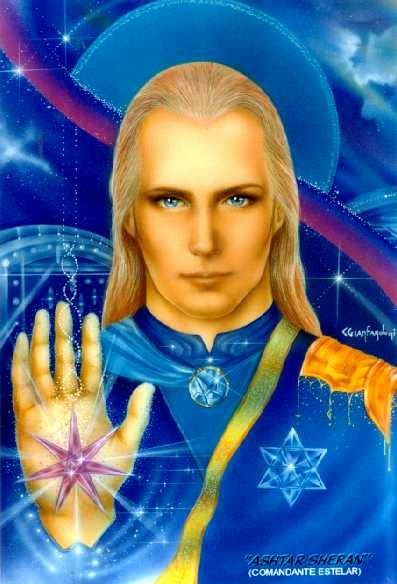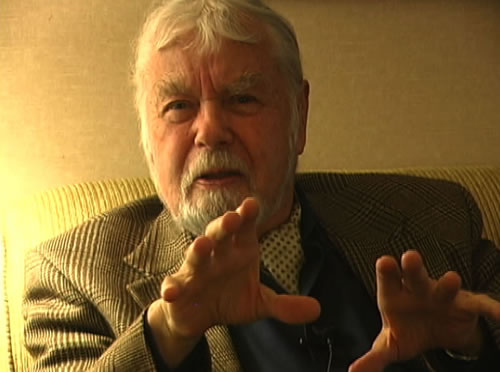|
Posted: 29 May 2014 04:40 PM PDT

Posted by: Paul Stonehill May 29, 2014
Courtesy of Greg Giles,
Georgia, according to ancient Greek authors, was a fabulously wealthy land with an advanced civilization. The Georgian language is more than 2000 years old; it is one of the world’s oldest languages with its own unique alphabet.
Georgia developed as a kingdom (Kingdom of Kartli, or the Caucasus Iberia) around the IV century BCE (Before Common Era), and reached the height of its prosperity in the XII and XIII centuries. Georgian culture evolved over thousands of years with its foundations in Colchian and the Caucasus Iberian civilizations, continuing into the ascent of the unified Georgian Kingdom under the single monarchy of the Bagrationi. The royal Bagratid dynasty claimed to be descendants of Biblical King David of Israel. Georgia is a relatively small country, but for centuries, Georgia’s geographic position has opened it to religious and cultural influences from the West, Persia, Turkey, and Russia; it was a crossroad between Christian and Muslim traditions, a land of ethnic and religious tolerance. The country had suffered foreign invasions and destruction, it was mortally wounded more than a few times, but like the mythical bird Phoenix, it would rise up, rebuild, and proudly live on. 
Mosaic of Queen Tamar
In this article we will look at the strange phenomena that occurred in the sky over Georgia in the XIII and XVII centuries. During the reign of Queen Tamar Bagrationi, the great granddaughter of King David IV, the Georgian Kingdom reached the zenith of its political might. Queen Tamar left to her son and heir, Giorgi IV Lasha (he ruled in the years 1212-1223), a powerful and tolerant multinational kingdom with a unique Georgian Christian culture. King Giorgi was planning to join the Crusaders and expand his kingdom by liberating Jerusalem, but the emergence of nomadic invaders unified by the iron fist of Chinggis Khan (Lord of the Universe), from faraway steppes and deserts, put an end to his plans. The Mongol Empire of Temuzhin (Genghis Khan or Chinggis Khan in Mongolian) was spreading like wild fire through Eurasia, from the shores of the Pacific Ocean to the heart of Europe.The Mongols of the 13th century laid waste to nations, cities, towns, and villages; to the nomads, Chinggis Khan brought glory, the conquests, a code of conduct and organization. In the year 1206 CE (Common Era), Chinggis Khan proclaimed himself ruler of the Mongol Empire; in 1211 CE, the Khans’ armies started marching east across the Gobi Desert and assaulted China. It was the policy of Chinggis Khan and his successors that any city or state that resisted the Mongol armies should be destroyed completely. In the year 1218 CE, the Mongols captured territory in south Kazakhstan and north and south route of Silk Road in China. In that same year of 1218 CE, the invasion of Transoxiana (modern-day southwest Kazakhstan, Uzbekistan and Tajikistan) had taken place. A Star with a Tail Grigol Abashidze (1914–1994) was a prominent Georgian writer and academician. He wrote a series of epic historical novels, including Lasharela (1957), Didi ghame (1963), and Tsotne Dadiani anu kartvelta datsema da amaghleba (1975). In this trilogy, Abashidze masterly discussed the history of 13th century Georgia and the establishment of the Mongol yoke. He continued to write well into his age and published his last works at the age of 80, shortly before his death in 1994. In his novel Lasharela (citing the 1984 Russian language edition, Chapter 24, page 229),Grigol Abashidze described an unusual phenomenon that occurred in the period of Georgia’s history: …A redoubtable, heretofore unknown power was approaching the country from the East. Neighboring countries to the southeast of Georgia were shrouded in guarded silence. It was as if stifling heat had descended upon earth, and everything living was suspended. A great storm, all devouring fire was coming from the East. Like birds and animals that feel the approach of forest fire and flee to save themselves, caravans of merchants, pilgrims, and wandering dervishes started moving from the Central Asia to the Middle East, to seek refuge. Sheet lightnings of the faraway fire had not yet appeared on the horizon, dark clouds had not yet covered the clear sky, but the proximity of the terrible disaster was felt everywhere and all over. Astrologers read the unavoidability of the approaching disaster through the unusual movement of the planets, and wandering prophets predicted the end of the world was near. In the middle of August, a star with a tail had appeared in the sky. Initially, it was sighted during the Saturday vespers hour. Its tail grew in size each night. In the beginning, the tailed guest appeared only at daybreak, later it became visible also at midnight, and in a few days it brightly glowed all through the night. It arrived from the East, and its light at first barely reached the ground, but then it strengthened and started glowing so blindingly as to cause people to fear and tremble when they looked at the star. It grew, and assumed the shape of a spear, and other stars faded in the radiance of its rays. The fear that was caused by appearance of an unusual heavenly body was also intensified due to the powerful earthquake that took place in Georgia at the same time. A great temple was destroyed, and four priests perished under its ruins. The Church and astrologers prophesied great calamities, and predicted that the sword of an enemy will shatter peace and quiet of Georgia. 
Grigol Abashidze’s Lasharela
While Abashidze does not state the year, it is clear from the analysis of Georgia’s history in general, and his novel Lasharela in particular that the sighting of the unusual heavenly body, or a UFO, took place in 1219 CE. Abashidze had used a number of sources while working on his wonderful, gripping novels. Among them were historical chronicles written by Rashid-Ed-Din, Ibn El Asir, Nesevi, and Juvein. The primary source Abashidze had used was Kartlis tskhovreba (A life of Georgia), which narrates Georgia’s history from ancient times to the XIV century. This was the book about the heroic past of the Georgian people; and it remains a great source for the history of ancient and feudal, medieval Georgia. The first volume contains historical essays giving an account of events that took place in the XII through XIV centuries. These works are by the historian of Queen Tamar, the historian of King Lasha Giorgi, and an anonymous XIV-century author, who wrote of events that took place in the 13th and 14th centuries. Jamtaagmtsera was the name given by researchers to the chronicle of the unidentified chronicler of Georgia, and Jamtaagmtsereli was the name given to this anonymous, but important writer. If the spear-shaped UFO sighted in 1219 CE was there to observe the coming disasters that would engulf Georgia and its neighbors, then its mission was not in vain. That year, 150 thousand Mongol warriors had attacked the lands ruled by Shah Muhammed II of Khorezm. Their fierce onslaught crushed ancient fortresses of Otrar, Khogent, Urgench, Samarkand, and then Khorezm. The Shah’s son, Jelal-ad-Din Mingburnu, was chased by Mongols throughout Asia, but valiantly fought back when possible. His armies invaded Georgia years later, burned and pillaged much of it in 1226, weakening the kingdom that would face the Mongol empire shortly thereafter. In the fall of 1220 CE, a detachment of Mongolian soldiers led by military leaders Zhebe-noyon and Subuda-bagatur who pursued the oustedShah Muhammed of Khorezmto the Caspian Sea, reached Azerbaijan, entered Armenia (part of the medieval Georgian kingdom) and defeated King Lasha’s powerful combined army of Georgians and Armenians in the battle of Khunan at the Kotman River. There were around 20,000 Mongol troops, on a reconnaissance mission against some 60,000 Georgians and Armenians. Giorgi Lasha himself was severely wounded in the chest in the battle against the Mongols; he died of his wounds in 1223. The Mongols could not be stopped by any force, and even King Giorgi’s horsemen were no match for them. The Mongol army mainly consisted of lightly armored but heavily armed horse-archers. The Mongol generals did not plan to conquer the Caucasus at that time and turned back. They returned with a much greater army in January 1221. The battle at Bardav was fought without a clear winner, and the Mongols withdrew to the Caspian Sea. They knew that it would be extremely difficult to fight the brave Georgians in their land, full of gorges and mountains. Much blood would have to be spilled. The Mongols returned in 1236 in a full-scale invasion, forcing Georgia (weakened by Jelal-ad-Din’s bloody reign) into submission by 1243. 
Statue of Chinggis (aka Genghis) Khan in Sukhbaatar Square in the center of Ulaanbaatar, capitol of Mongolia. (Credit:myafricansojourn.blogspot.com)
One manuscript from the XVII century mentioned another spear-shaped UFO over Georgia. XVII Century, Georgia under the Ottoman Empire In the XV century, Georgia became an isolated Christian country surrounded by the Islamic world. The country descended into poverty, lost touch with its co-religionists, and eventually was fragmented into four smaller kingdoms. To preserve their independence and faith, to safeguard their territories from distant tribes moved there by foreign rulers, the Georgian people had waged a bloody and heroic struggle during the next centuries. The XVII century was full of hardships and suffering for the people of Georgia. But indomitable Georgians rose up to liberate Georgia from the Sefevide Persia and the Ottoman Turkey, on a number of occasions. Western Georgia belonged to the Osman Ottoman Empire by the terms of the 1639 treaty.  Deacon Zakaria Sarkawagi was a churchman and Armenian historian. He was known as Zakaria of Kanaker, for he was born in 1626 in the village of Kanaker, now a suburb of Yerevan; he died in 1699 in monastery of Hovhannavank (in the present-day Armenia). His writings dealt with the socioeconomic history of the Ottoman Empire in the second half of the 17th century and describe the wars between the Sefevids and the Ottomans in Armenia and Mesopotamia. His manuscripts are kept in Yerevan, in the Matenadaran Archives. Sarkawagi’s writings were published in 1870, Zakaria Sarkawagi patmagrut’iwn(Chronicle).Khronika, translated by M. Darbinian-Melikian (Moscow, 1969) was the Russian translation based on all available manuscripts. Mikhail Gershtein, the foremost UFO researcher in Russia today, has mentioned two works of Sarkawagi that contain fascinating descriptions of UFOs (Mikhail Gerstein, Po tu storonu NLO, Saint Petersburg, Russia, 2002). He referred to the article published in the extremely popular Soviet magazine Tekhnika-Molodyozhi (Issue 6, 1991), where a number of articles about UFOs, ancient astronaut hypothesis, and paranormal phenomena had been published by its audacious editors during the scant, less ideologically rigid periods of the Soviet era. The article, titled Kamennaya letopis’ vtorzheniy was written by Akop Tonakanyan, the Chairman of the Ufology Commission of Yerevan, and Vadim Orlov, the science writer forTekhnika-Molodyozhi. It mentioned two manuscripts of Zakaria Sarkawagi. One was titled Regarding the fall of light from the sky, and the other manuscript was titledAbout heavenly signs in the sky. The first one contains description of a phenomenon that Zakaria Sarkawagi observed in 1641. In the day the cross was erected, he wrote, during the sunset, it was not dark yet, and the daylight continued. Suddenly, the ether on the eastern side exploded, and descending was a large and blue light. Wide and long, it descended to approach the Earth, and its light illuminated everything around, brighter than the Sun. And the front part of the light rotated like a wheel, moving to the north, red and white (sic), and in front of the light, at the distance of an open palm (of a hand-P.S.) was a star, the size of Venus. My father sand, crying, six sharakans*; the light was still visible, but later departed and became invisible, and we heard later that this wonderful light was observed in Akhaltsikhe *.In the other manuscript, About heavenly signs in the sky, Zakaria Sarkawagi described a mysterious phenomenon from 1679. One night everyone saw in the air something (that looked like-P.S.) like a staff and spear. The ends were like those of a lance. They began to turn gradually east and west. This lasted for 20 days, and then quickly disappeared. After that a star appeared; a very large one, of yellow color, with long and bulky hair that pointed to the west. And the hair radiated and like sparks fell on the ground. This lasted for a month and two days. (The star-P.S)Never moved from the spot, was visible sometimes in the evening, sometimes in the morning, and sometimes at night, but later would disappear. 
Sunset over Tbilisi, the capitol city of Georgia. (Credit: Vladimer Shioshvili)
————– *Sharakan is the name of a remarkable body of Armenian liturgical songs dating back as far as medieval times; the songs are remarkable not just for their antiquity, but for their exquisite, often often heartrending melodies. Sharakan is sung for about two or three minutes, hence, the phenomenon lasted about fifteen minutes. *Akhaltsikhe is a small city in southwestern Georgia. In 1628 the city became the center of Ahiska Province of the Ottoman Empire. Today, the city is populated by Georgians, Armenians, Jews, Muslims, and Russians. | ||
fol
Be of GREAT HEART our dear friends.
SO VERY MUCH HAS CHANGED …
SO VERY MUCH IS CHANGING …
SO VERY MUCH WILL CHANGE …
For it is written in the stars.
Are you not ALL ‘Children of the stars’? Did you not KNOW what you had decided and then came to Earth to put it into place?
The Federation o Light -- 16th August, 2014
to gain space
Labels
- ADAMU THROUGH ZINGDAD
- AG
- Ailia Mira
- ALEC CHRISTOS GABBITAS
- ALEX COLLIER
- ALIEN ABDUCTIONS
- ALIEN INTERVIEW ENGLISH
- ALIEN INTERVIEW PORTUGUÊS
- Andrew Collins
- anjo de luz
- Arcanjo Metraton
- Arcanjo Miguel
- ASHTARA TRISTAR
- Barbara Marciniak
- BEINSA DOUNO
- Beinsa Douno -- books
- Blossom Goodchild
- BOOKS
- BRASILEIRO
- BRAZILIAN
- BULGARIAN
- Caroline Myss
- CASTELLANO
- CELIA FENN
- CHEMTRAILS
- CHINESE
- Christine Day
- Christine Preston
- Christos
- COREY GOODE
- Corey/GoodETxSG
- COSMIC AWARENESS
- COSMIC SOCIETY
- CROATIAN
- CROP CIRCLES
- Curadora64
- CZECH
- DANISH
- DARK JOURNALIST
- David Wilcock
- DEUTSCH
- Dr. Michael Salla
- DUTCH
- Early UFO Reports
- el Concejo
- EL CONSEJO
- Elina St-Onge
- Elizabeth Trutwin
- EMMANUEL DAGHER
- engl
- ENGLISH
- Eric Raines
- escuelavaloresdivinos
- ESPAÑOL
- EXOPOLITICS
- EZRA POUND
- FARSI
- FEATURING
- Federação da Luz
- Federación Galáctica
- FINNISH
- FIRST CONTACT
- FRANÇAIS
- FREDDY SILVA
- FREE
- FREE ENERGY
- french
- Gennady Tkachenko
- geo
- Geoengineering WATCH
- Gerald O' Donnell
- GERMAN
- GLOBAL MASS ASCENSION
- GRAHAM HANCOCK
- GREEK
- GREGG BRADEN
- Günther Wiechmann
- H.I.P.P.I.E.
- HADRON COLLIDER DISASTER
- Harald Kautz Vella
- Healing Codes
- Heallng Codes
- Health
- Hellenic
- Hilarion
- HIPNOSIS REGRESIVA
- INNER EARTH
- ITALIANO
- JAMES TWYMAN
- JAPANESE
- Jesús
- jJahn J. Kassel
- JO ANN RICHARDS
- kundalini
- Marlene Swetlishoff
- Matthew
- Maya Benmergui
- MEDITATION
- MEHRAN KESHE
- MessageToEagle
- MiKE QUINSEY
- Mundodesconocido
- NANICE ELLIS
- Natacha Henriquez
- Natalie Glasson
- Nederlands
- NORWEGIAN
- ONE COMMUNITY
- Os Pleiadianos
- Ostergedanken
- Pamela Kribbe
- Paula Abreu
- PAZ NO MUNDO
- PHIL
- PORTUGUÊS
- PORTUGUESE
- PRAYER FOR PEACE
- PROJECT CAMELOT
- Robert J. Burrowes
- Rodrigo Romo
- ROMANIAN
- RON HEAD
- Ronna Herman
- RUSSIAN
- SALENA MIGEOT
- SaLuSa
- Secret Space Program
- Sheldan Nidle
- SIRIAN MOTHERSHIP
- SPANISH
- SSP
- SSP CONFERENCE
- SSP. FRENCH
- Suzanne Ward
- SVENSKA
- Swedish
- Talkin' Bout a Revolution
- THE GOLDEN BOOK
- The HAARP Report
- The Thunderbolt Project
- Tracy Chapman
- TURKISH
- Tyberonn
- UKRAINIAN
- um Walk-In
- Vanessa Barbosa
- VIDEO
- whales
- WORLD PEACE
- Zen Gardner
- zing
- ZINGDAD
Friday, May 30, 2014
UFOs over the Kingdom of Georgia
PRESIDENT
2015 President - EN from Roberto Petitpas on Vimeo.
2015 President - PT from Roberto Petitpas on Vimeo.
15.05.2015 Author: F. William Engdahl
p
vp + vs
AVAILABLE IN FRENCH, ROUMANIAN, PORTUGUESE
2017 FSB Meeting - EN from Roberto Petitpas on Vimeo.
2017.03.10 Maria Zakharova - MFA Press Briefing - EN from Roberto Petitpas on Vimeo.
Terra Galactica
crop circle
the way we live
Could you imagine
MAN
THE ENTIRE 14:02' INTERVIEW IS AVAILABLE AT
rd
info@exopoliticsportugal.com
xmas
“Glory to God in the highest, and on Earth peace, good will toward men.”
This Christmas, Give Peace
I Decree
Anrita
esoteeric II
SUBTITLES IN ENGLISH, ESPAÑOL, PORTUGUÊS
Click upon the circle after the small square for captions
pleiades
Morgan Kochel says:
terra galactica uk
Popular Posts
-
Divine H ealing Codes And How To Use Them Good morning! It is time for us to discuss the various healing codes and how t...
-
Please Read and Spread --Conversation with A Man Who Went to Mars by Morgan Kochel Conversation with A Man Who Went to Mars by Morgan...
-
LYRANS The following information is a composite of knowledge that I have gathered through other Felines from my homeland galaxy of ...
-
Adamu: Umfassende politische Lagebesprechung Veröffentlicht am 22. August 2016 Vorwort von Zingdad (Arn Allingham): Der h...
-
Early UFO Reports By Billy Booth UFOs/Aliens Expert See some of the best known early cases of flying saucers The Ken...
-
The Causes Of Illness According To Edgar Cayce In5D February 23, 2015 Health by Sidney D. Kirkpatrick and Nancy Thurlbeck ...
-
Queridos, agora podem ver que o Coronavírus fez com que avaliassem o modo como estavam agindo e que as mudanças estão literalmente a s...
-
Puede que especuléis sobre cómo se logró, pero el Coronavirus fue propagado principalmente por drones. Sus efectos no durarán muc...
-
Conversation with A Man Who Went to Mars by Morgan Kochel Based on an interview conducted over several days in February 2012. My g...
Be divergent
ashtar
arabic song
SO ... ONCE AGAIN I REITERATE ...
WE ARE ASKING YOU FOR YOUR ASSISTANCE ... WE ARE PUTTING OUT AN S.O.S. ... IN LOVE ...
TO OUR STAR BROTHERS AND SISTERS ... OUR FAMILY ... WE ASK FROM OUR HEARTS ... FROM THE CORE OF WHO WE ARE ... THAT YOU UNDERSTAND OUR SITUATION AND 'MAKE PLANS' TO ADHERE TO OUR CALL.
Blossom, 02:01:2014
richard dolan song
SEND SNOWDEN HOME
Send Snowden home
The world's greatest whistleblower is stuck in the Russian winter, facing solitary confinement, ridicule, and life in prison if US agents grab him. But this week, we could help get him to safety.
Edward Snowden exposed the mind-boggling and illegal level of surveillance the US government is conducting on, well, all of us. His welcome in Russia runs out soon, and he's got nowhere to go. But Brazilian President Dilma is angry at US surveillance and experts say she might brave massive US pressure to consider asylum for Snowden!
This is about much more than one man. If Snowden's act of truth-telling leads to crippling punishment, it sends the wrong signal to abusive governments and whistleblowers everywhere. If 1 million of us take action now, we can send President Dilma the largest citizen-supported asylum bid in history -- sign to safeguard Snowden and defend democracy everywhere.
KIEV
Revolution in Kiev, Ukraine
In the last days I received multiple requests to translate my posts for foreign readers, as they have very limited information about the happenings in Ukraine. This material describes events which took place in Kyev on January 22 and 23.
Sharing and distribution is appreciated.
22 January 2014. Battles on streets of Kiev.
I came to Kiev. I came to see for myself what is happening here. Of course, an hour after arriving at Maidan, you begin to understand that everything what you've read in dozens of articles, saw in TV news reports is total crap. In the upcoming reports I will try to, as objectively as possible, to sort out this new wave of Kiev revolution.
Translate
Ancient Knowledge
The Book of Enoch
Einstein
Falado em Portugês Biografia - Albert Einstein nasceu na região alemã de Württemberg, na cidade de Ulm, numa família judaica. Em 1852, o avô materno de Einstein, Julius Koch, estabelece-se como comerciante de cereais em Bad Cannstatt, nos arredores de Estugarda. Os pais de Einstein, Hermann Einstein e Pauline Koch, casaram-se em 8 de agosto de 1876. Hermann, que era comerciante, muda-se de Bad Buchau para a cidade de Ulm, onde passou a viver com a esposa. É em Ulm que nasce Albert Einstein, em 14 de março de 1879.












No comments:
Post a Comment